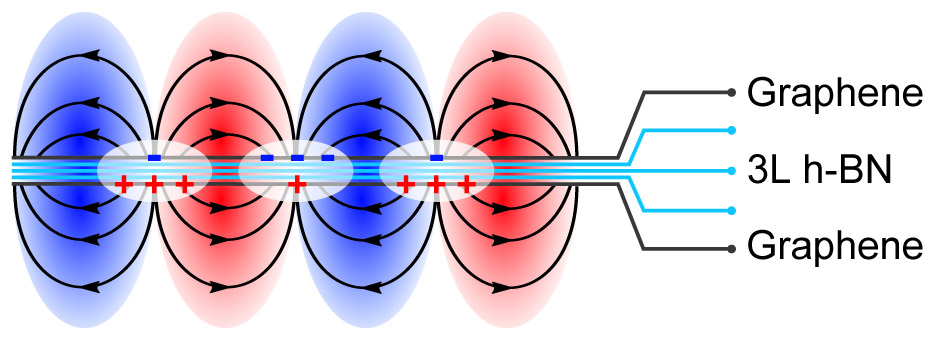15 November 2017
The ultimate limit in controlling light and electrons at the nanoscale is the atomic scale. So far, the smallest device that can control electrons at that scale is the quantum tunnelling transistor, of a few atoms big, where quantum mechanics dictates the motion of electrons.
ICFO researchers have now added light to these quantum tunnelling devices, and found that quantum mechanics also dictates the motion of plasmons, which is the synchronous motion of light and electrons inside the transistor. Published in a recent special issue about “2D Materials for Nanophotonics” in ACS Photonics, the study has been carried out by ICFO researchers Dr. Achim Woessner and Dr. Mark Lundeberg, and led by ICREA Professor at ICFO Frank Koppens, in collaboration with the research group led by Novel Laureate Prof. Kostya Novoselov at Manchester University, and the research group led by Prof. Marco Polini at IIT.
The researchers built the transistor from two-dimensional materials using a bottom-up technique: two layers of graphene separated by one nanometer (three monolayers) of insulating two-dimensional hexagonal Boron Nitride material. Then, a voltage was applied between the graphene layers, which generated the quantum tunnelling of electrons, meanwhile electrons were also removed from one graphene layer (leaving holes behind) and inserted in the other graphene layer. Interestingly enough, plasmons showed to propagate in these devices, while the net charge of the device remained zero. With near-field microscopy, the researchers visualized the plasmons and found that the plasmons exhibit ultra-strong optical field confinement, down to the nanometer scale.
The results of this study show that quantum tunnelling transistors can be used to control electrons and light simultaneously. Such discovery could pave the way to the development of nano-optoelectronic devices, incorporating light into future computer chips. Future research will aim for all-electrical generation and detection of plasmons in the quantum transistors.
This research has been partially supported by the European Research Council, the European Graphene Flagship, the Government of Catalonia, Fundació Cellex and the Severo Ochoa Excellence program of the Government of Spain.

Plasmons in a quantum tunnelling transistor
ICFO researchers control light, strongly confined in an atomic-scale transistor.

Sketch of the double layer graphene, the electric field and field lines of the measured optical plasmon mode











